The late, great artist was born 113 years ago, on Dec. 25, 1911…

By PETER BOSCH
Earlier this year, in honor of the 95th anniversary of the Tarzan newspaper comic strip, I wrote a special article saluting the 17 artists who drew the strip over the years (just the strip, not the books and not the comics). On a separate occasion, I also saluted Russ Manning for his incredible art on the daily and the Sunday for several years. But there is another of the 17 who deserves very special attention for his magnificent contributions to the Edgar Rice Burroughs’ character.
Burne Hogarth was born December 25, 1911, in Chicago (coincidentally, the birthplace of Edgar Rice Burroughs and of Tarzan book illustrator J. Allen St. John). He was an artist extraordinaire whose reputation was made when United Features Syndicate chose him when Hal Foster left the Tarzan Sunday to devote himself to his Prince Valiant strip. Hogarth drew Tarzan from 1937 to 1945 but then quit suddenly in protest when he discovered the strip was being circulated in Europe and United Features would not increase his pay to compensate for this.
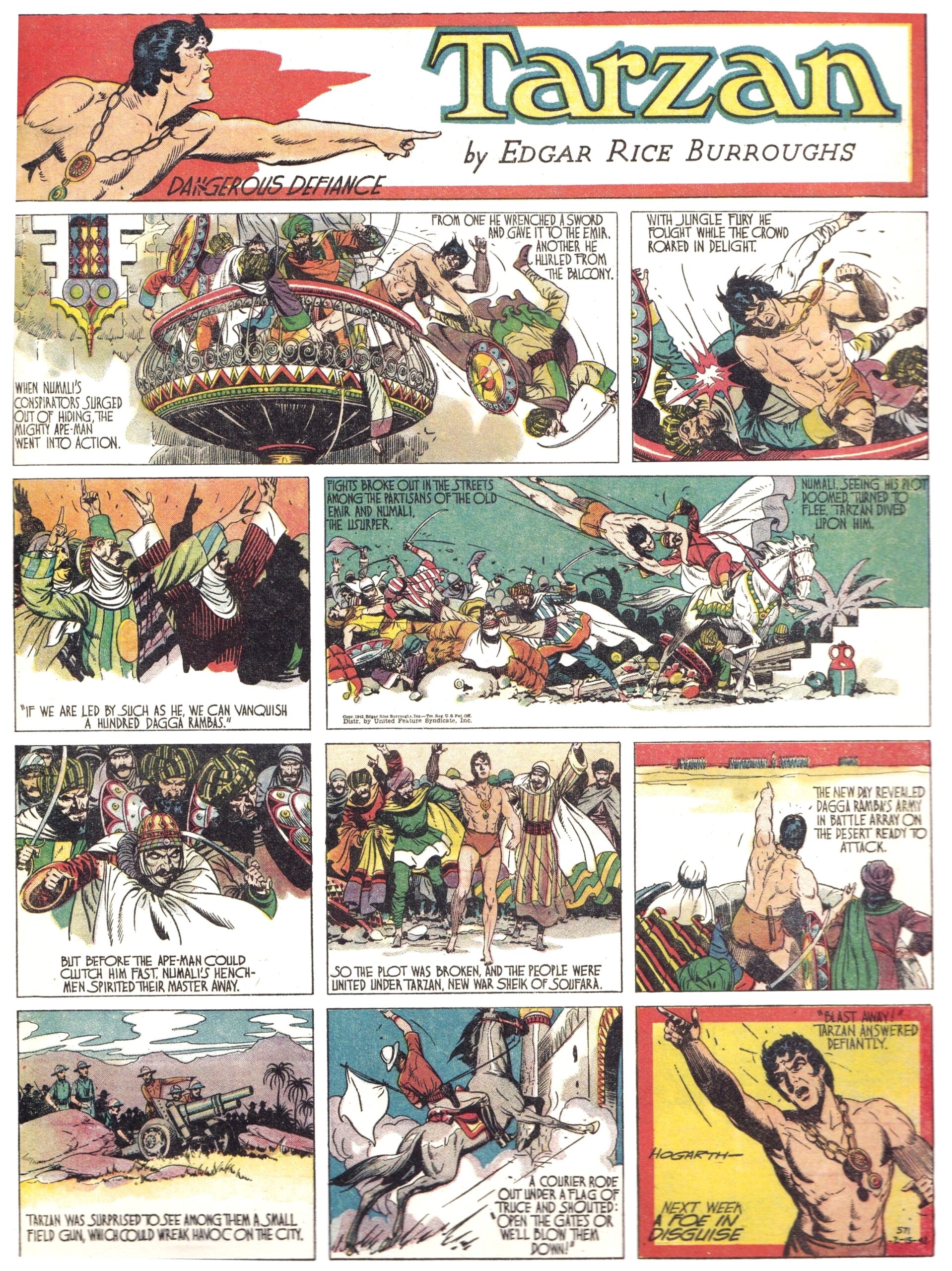
Tarzan Sunday, February 15, 1942. Script by Don Garden.
Hogarth created a new gorgeously drawn Sunday adventure strip, Drago, which debuted Nov. 4, 1945, but it came to an end just one year later, on November 10, 1946.
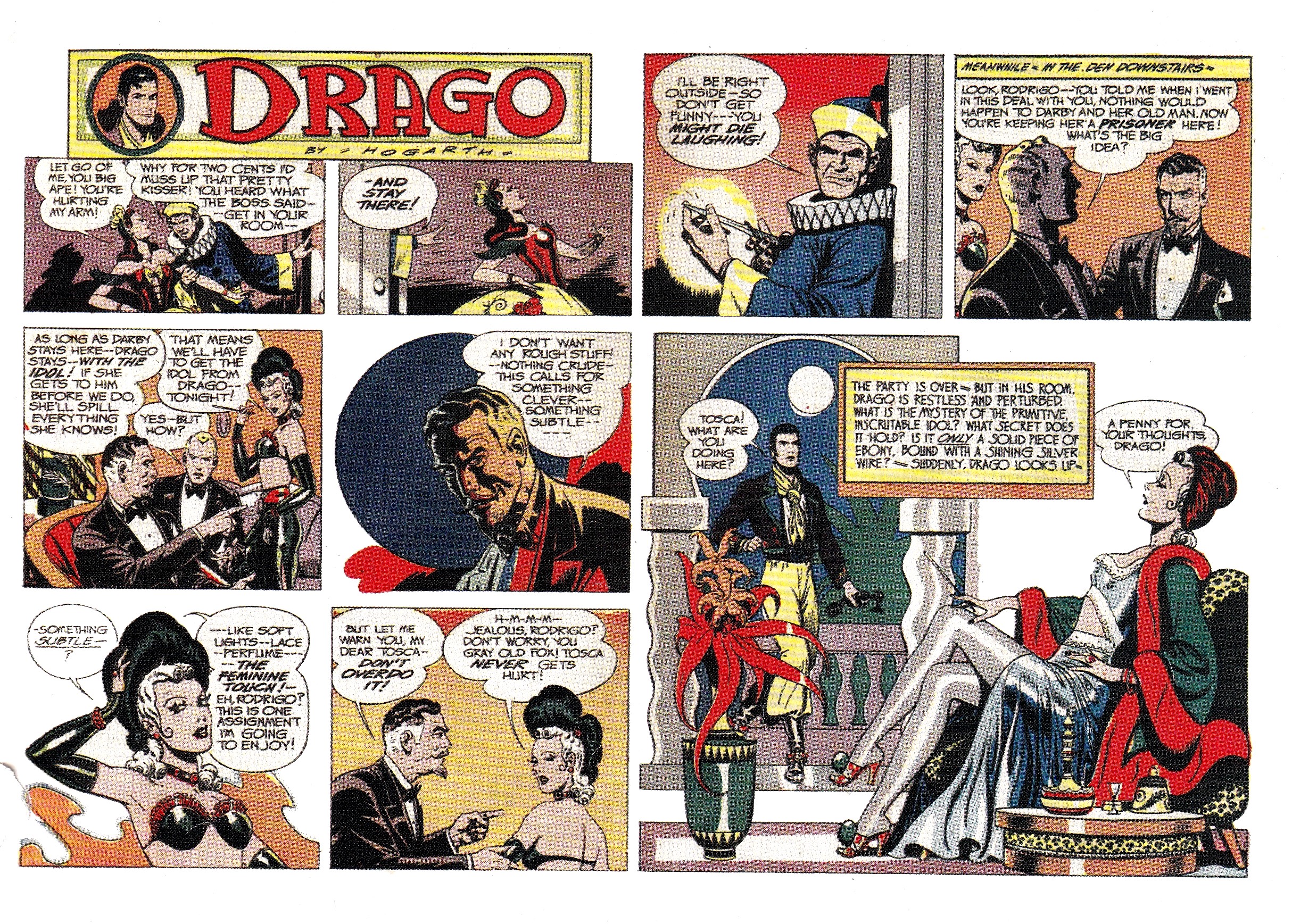
United Features wanted him back on Tarzan and offered him a salary increase. He resumed drawing the strip from 1947 to 1950.
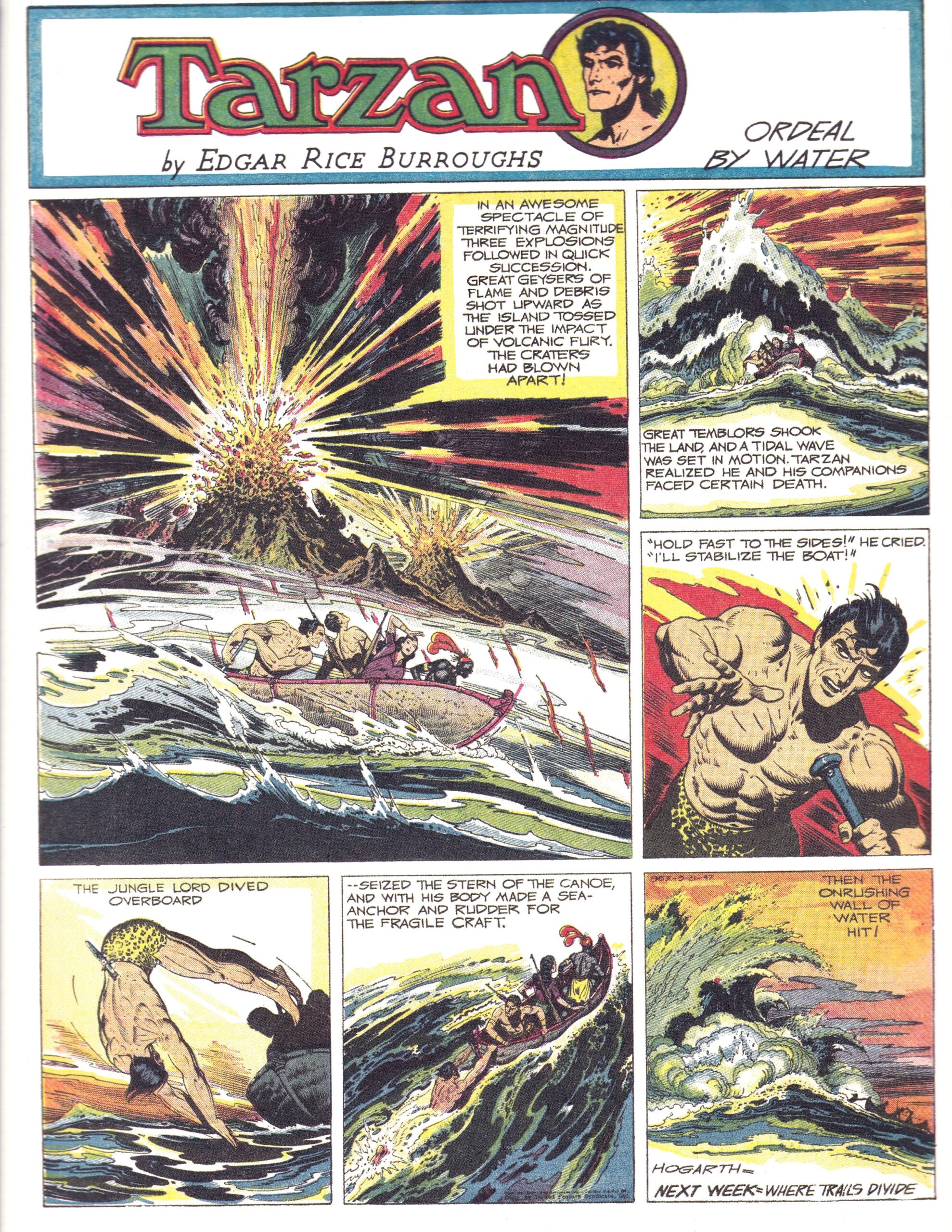
Tarzan Sunday, September 21, 1947. Script and art by Hogarth.
Following this, he became an art teacher and wrote several books on drawing the human figure. But in 1972, when no one expected it, he drew an entirely new hardcover book, Edgar Rice Burroughs: Tarzan of the Apes (Watson-Guptill Publishing), filled with 122 full-color pages that featured some of the most incredible art of his career. (Below are several selected pages, with Burroughs’ original text adapted by Robert M. Hodes.)
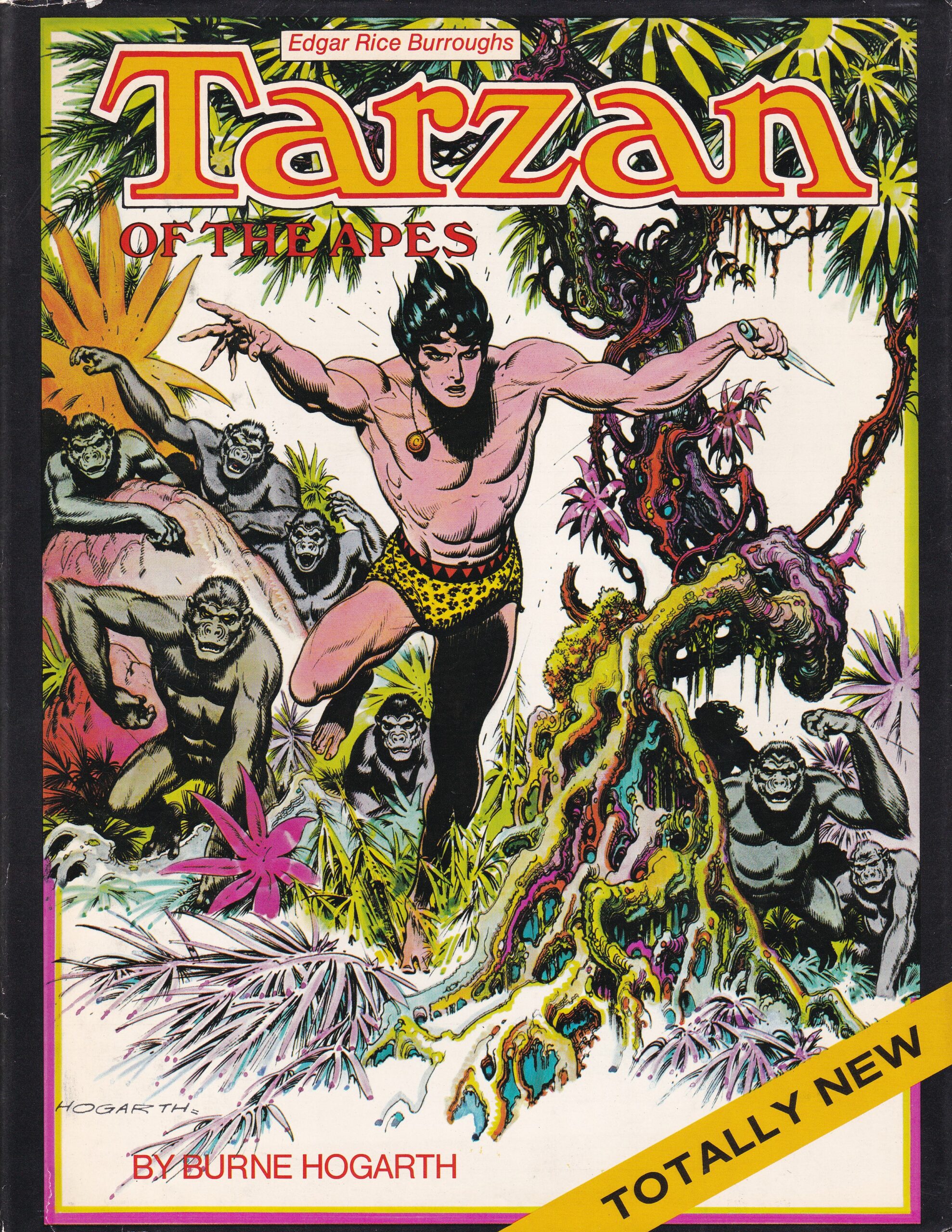
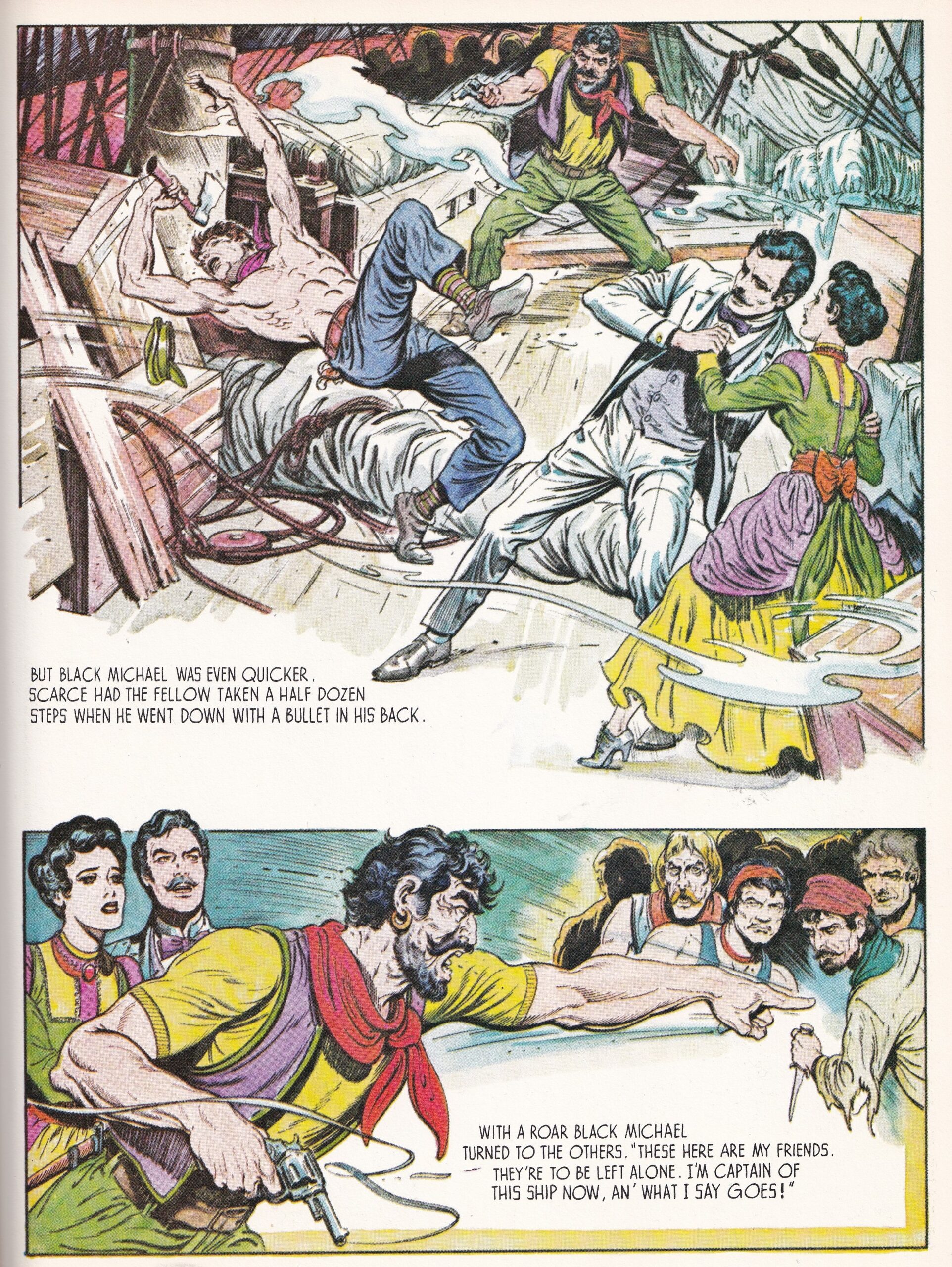

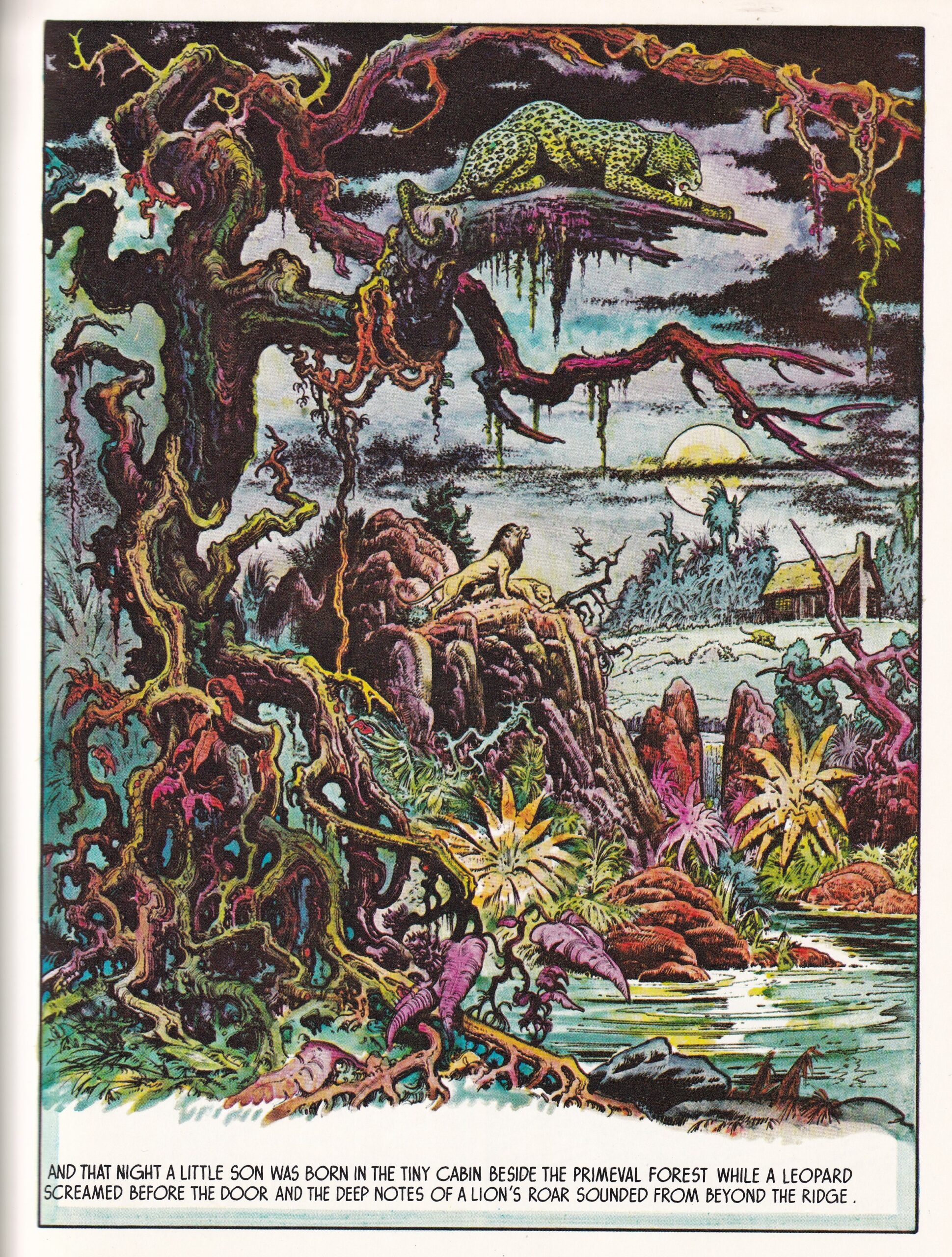
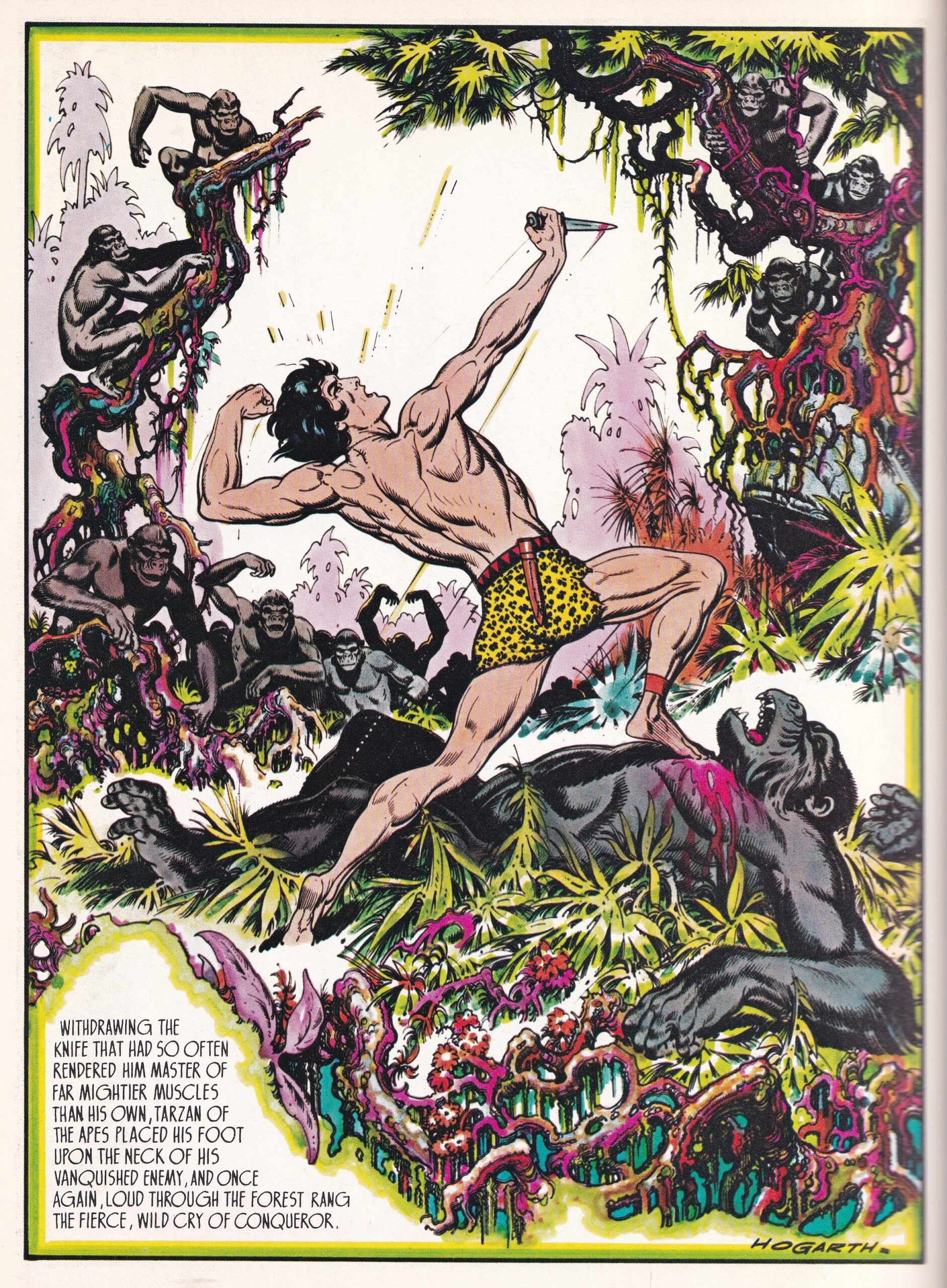
And if that wasn’t enough, he followed it up four years later with Jungle Tales of Tarzan (Watson-Guptill Publishing), this time featuring his artwork in exceptional black-and-white (other than the front and back covers below). Hogarth and Hodes adapted Burroughs’ original text.
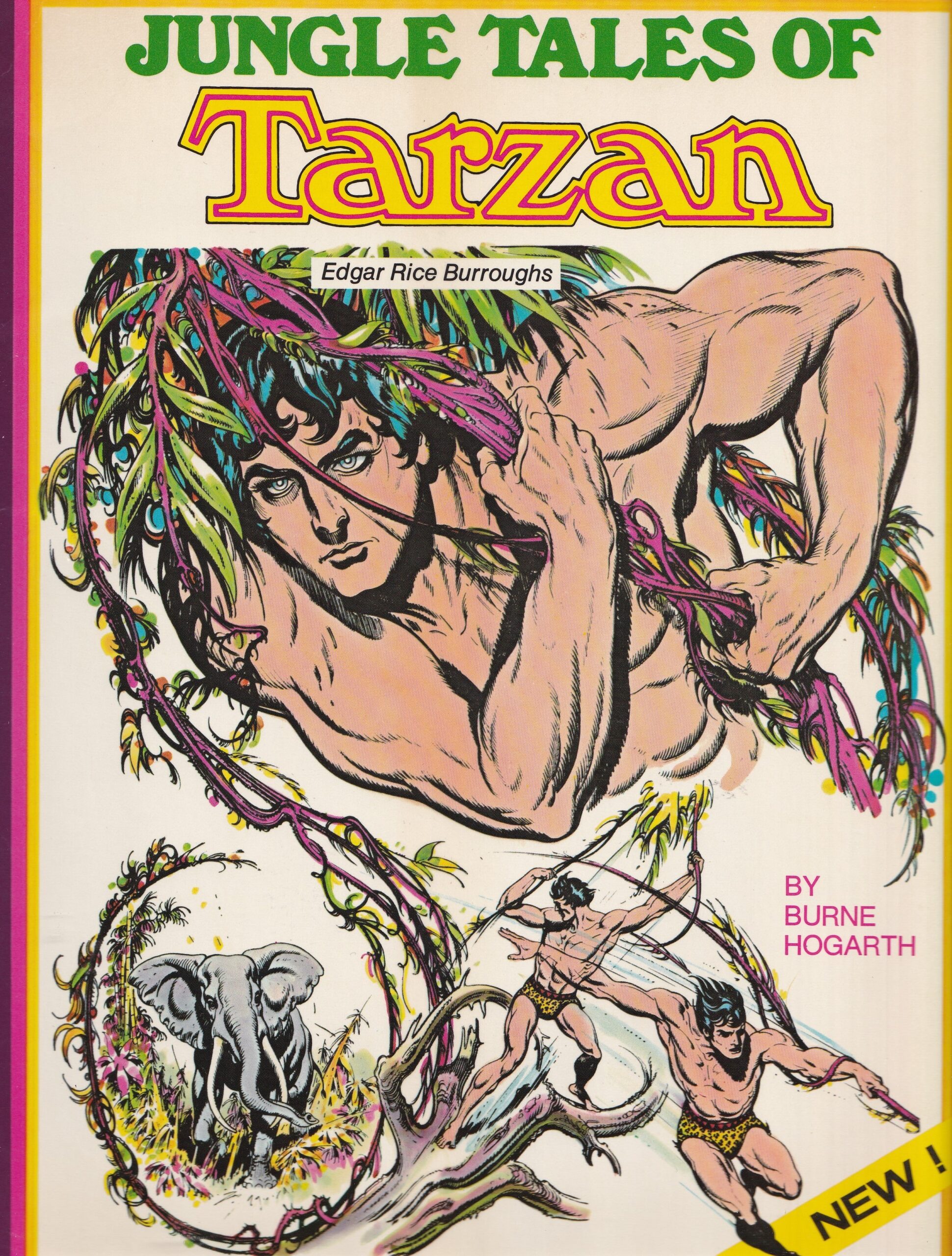
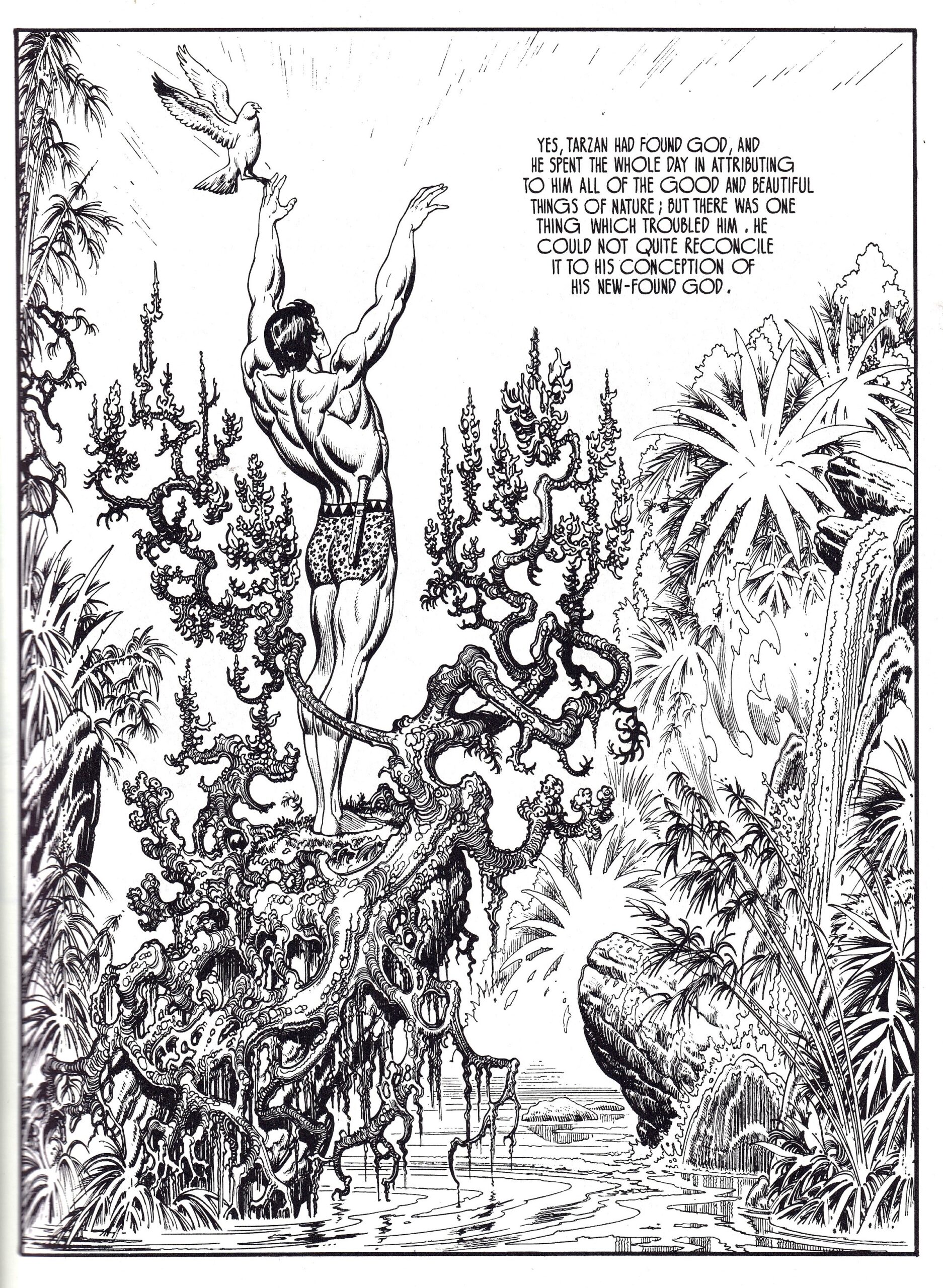
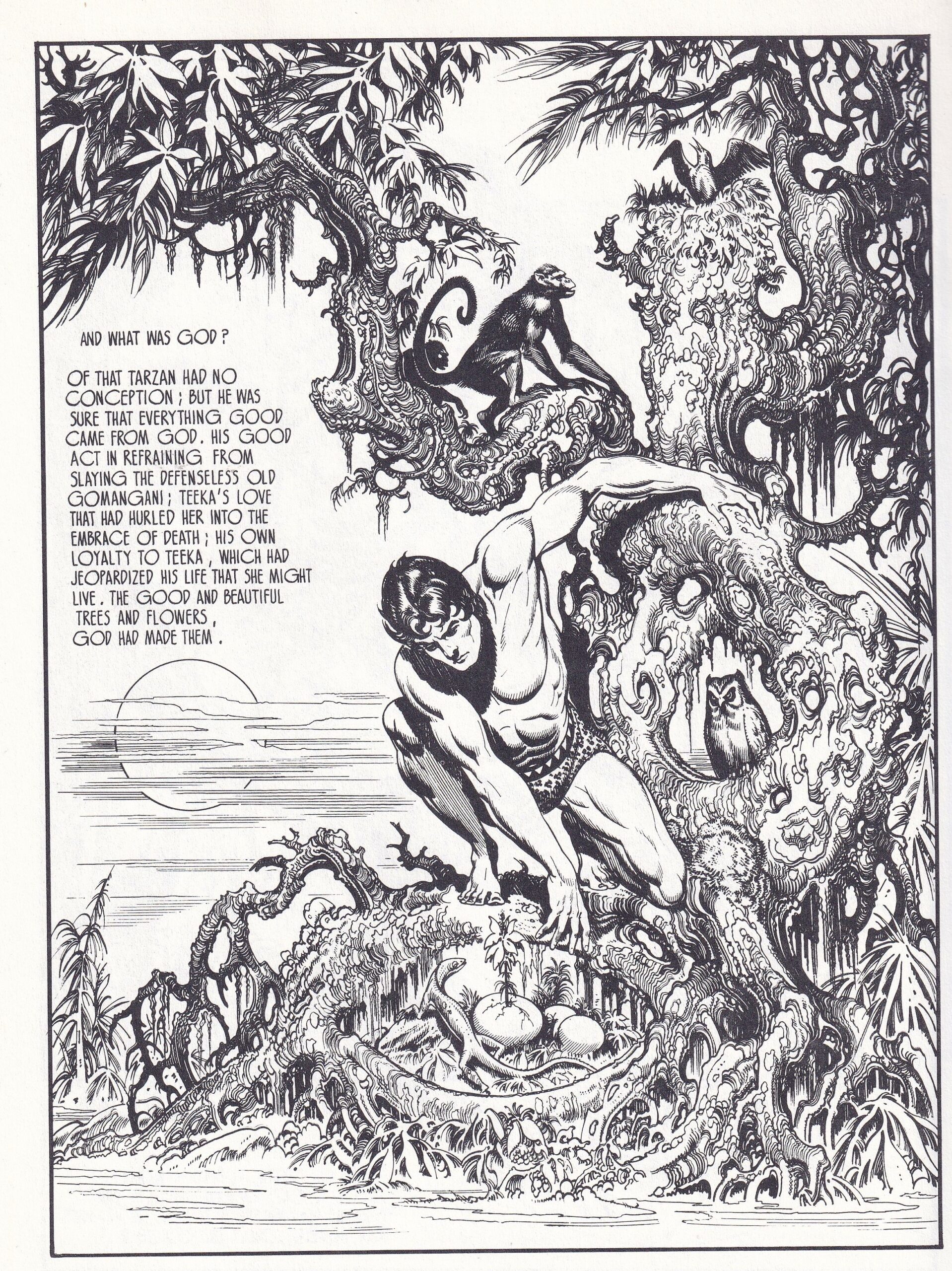
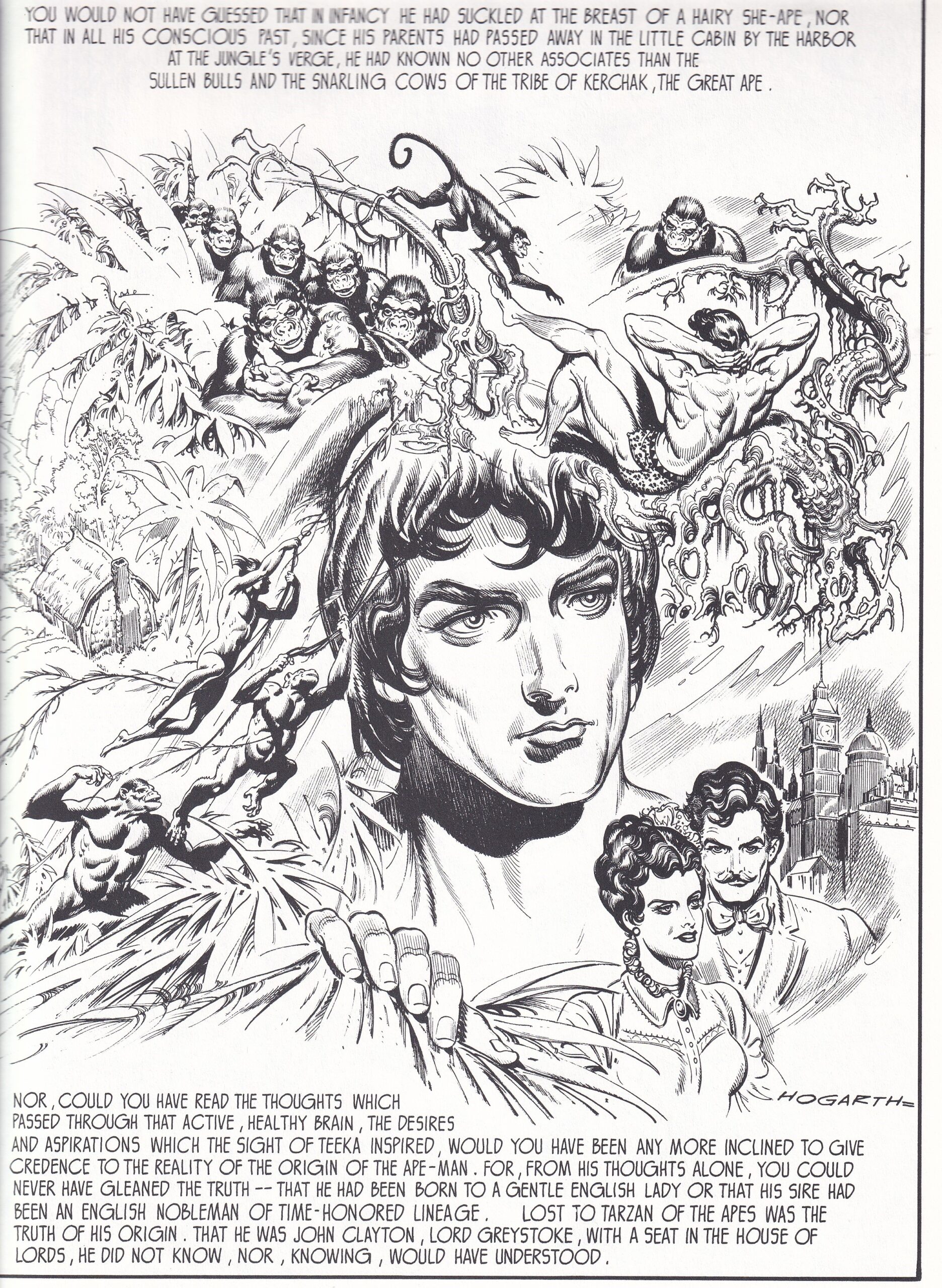
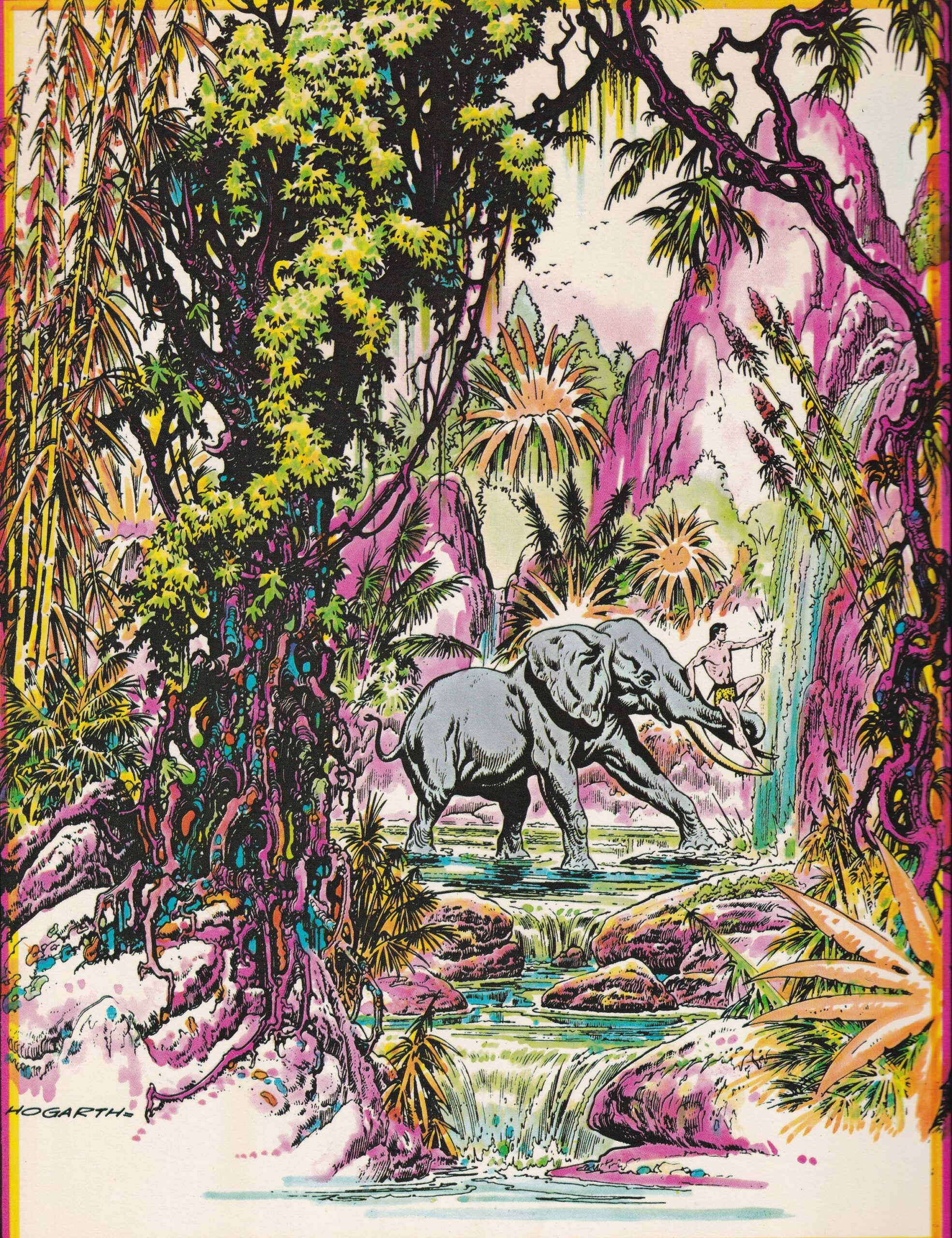
Hogarth continued to teach drawing, in classrooms and art books. He also took on special projects, including two portfolios about King Arthur.
In 1996, he appeared at the Angoulême International Comics Festival in France as a guest of honor. Following this event, though, while visiting Paris, he had a heart attack and died on Jan. 28, 1996. He was 84 years old.
—
MORE
— THE ARTISTS WHO MADE TARZAN GREAT: A 95th Anniversary Salute. Click here.
— 13 GREAT ILLUSTRATIONS: A RUSS MANNING Birthday Celebration. Click here.
—
13th Dimension contributor-at-large PETER BOSCH’s first book, American TV Comic Books: 1940s-1980s – From the Small Screen to the Printed Page, was published by TwoMorrows. A sequel, about movie comics, is coming in 2025. Peter has written articles and conducted celebrity interviews for various magazines and newspapers. He lives in Hollywood.
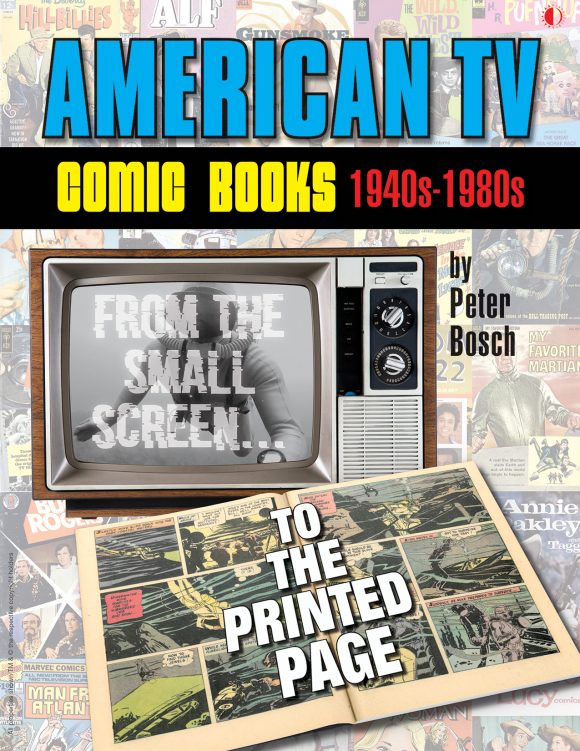

December 25, 2024
Hi Peter!
Thank you bunches for this! Back in my college art major undergrad days (later 1980s)–when I also began recollecting comics more earnestly again from the kiddie days, and also encountered my first art history classes with my exposure to the Renaissance and Baroque eras of art where the active and expressive human figure was the pinnacle of artistic achievement in relating visual stories from the Greco-Roman and Judeo-Christian past–the human figure of expressive action became my focus.
So I snapped up all those various Burne Hogarth art instruction books on the subject.
He eventually did 6 in total, the first three being esp. important, but the others also very valuable: Dynamic Anatomy (1958), Drawing the Human Head (1965), Dynamic Figure Drawing (1970–my very favorite), Drawing Dynamic Hands (1977), Dynamic Light and Shade, (1981) and Dynamic Wrinkles and Drapery (1995). These were quite influential while I simultaneously discovered (or re-discovered) the art esp. of Jim Aparo and Neal Adams of the early to mid-1970s in honing my figurative efforts.
Hogarth was the consummate master of the human figure and his reputation as a teacher of this is most deserved (I had it just through the books–though I’ve heard his demonstrations of this at the School of Visual Arts in NYC working only from memory was outstanding). And too his illustrative work on Tarzan is just fantastic–and as I was not aware until now of the 1972 book which now I have to have.
Both (Hogarth’s teaching and Tarzan) later showed up in the best television or movie adaptation of the character as reflective of Edgar Rice Boroughs: Filmation’s Tarzan: Lord of the Jungle (1976 – 1981), which shows that clear Hogarth influence in Tarzan’s rendering, including his facial features or “portrait” likeness, as combined with that beautiful rotoscoping of his well-proportioned movement.
Six posts for Christmas morning is quite the present! Thank you again, Peter and the rest of the crew at 13th Dimension.
December 26, 2024
Another example of a legend of the newspaper strip long past and a publisher that treated their talent as something to be used and taken for granted. In the early ‘80s, I had bought a hard cover about his dynamic figure drawing. What a great look deeper. Thanks, Peter.